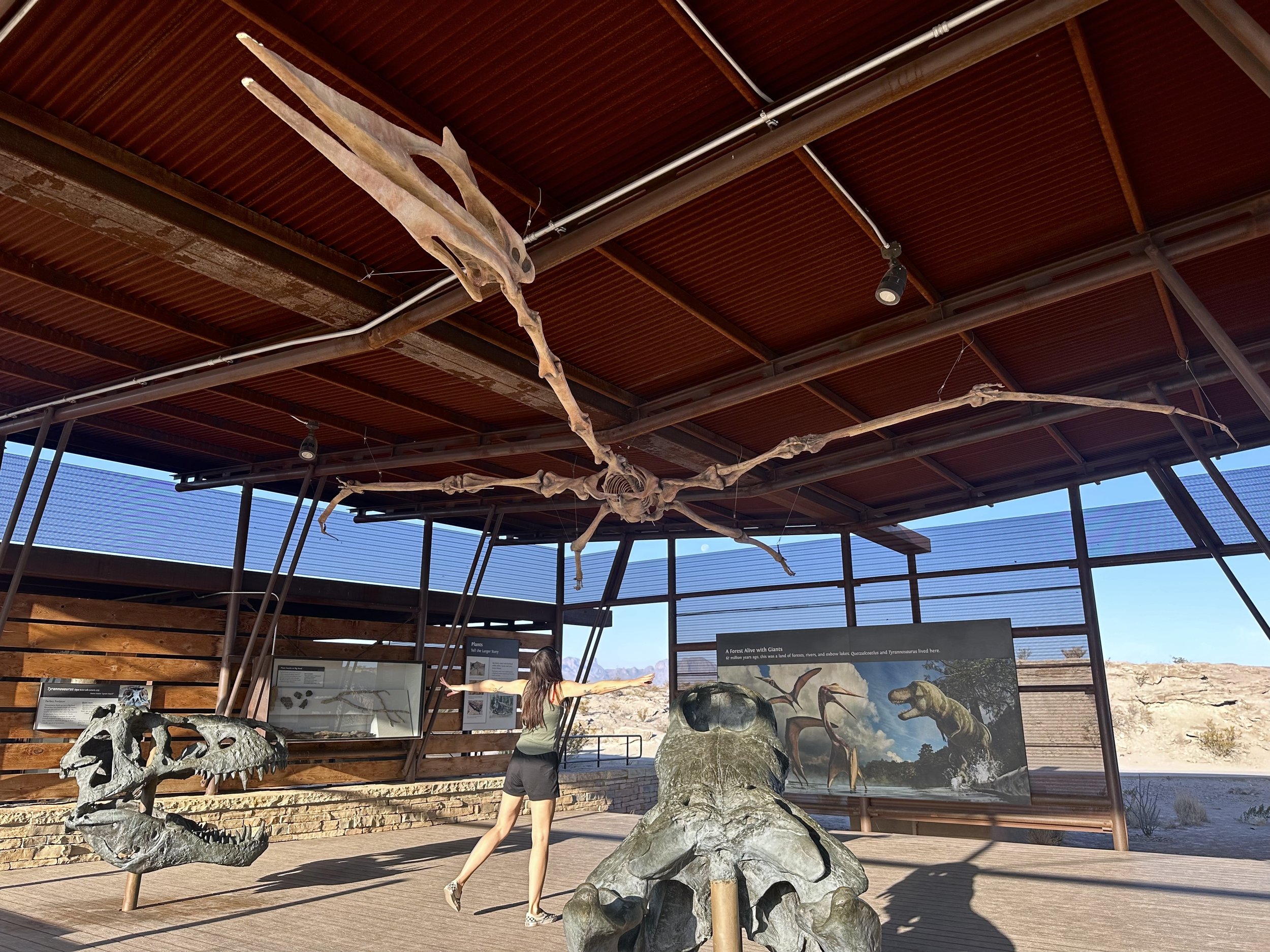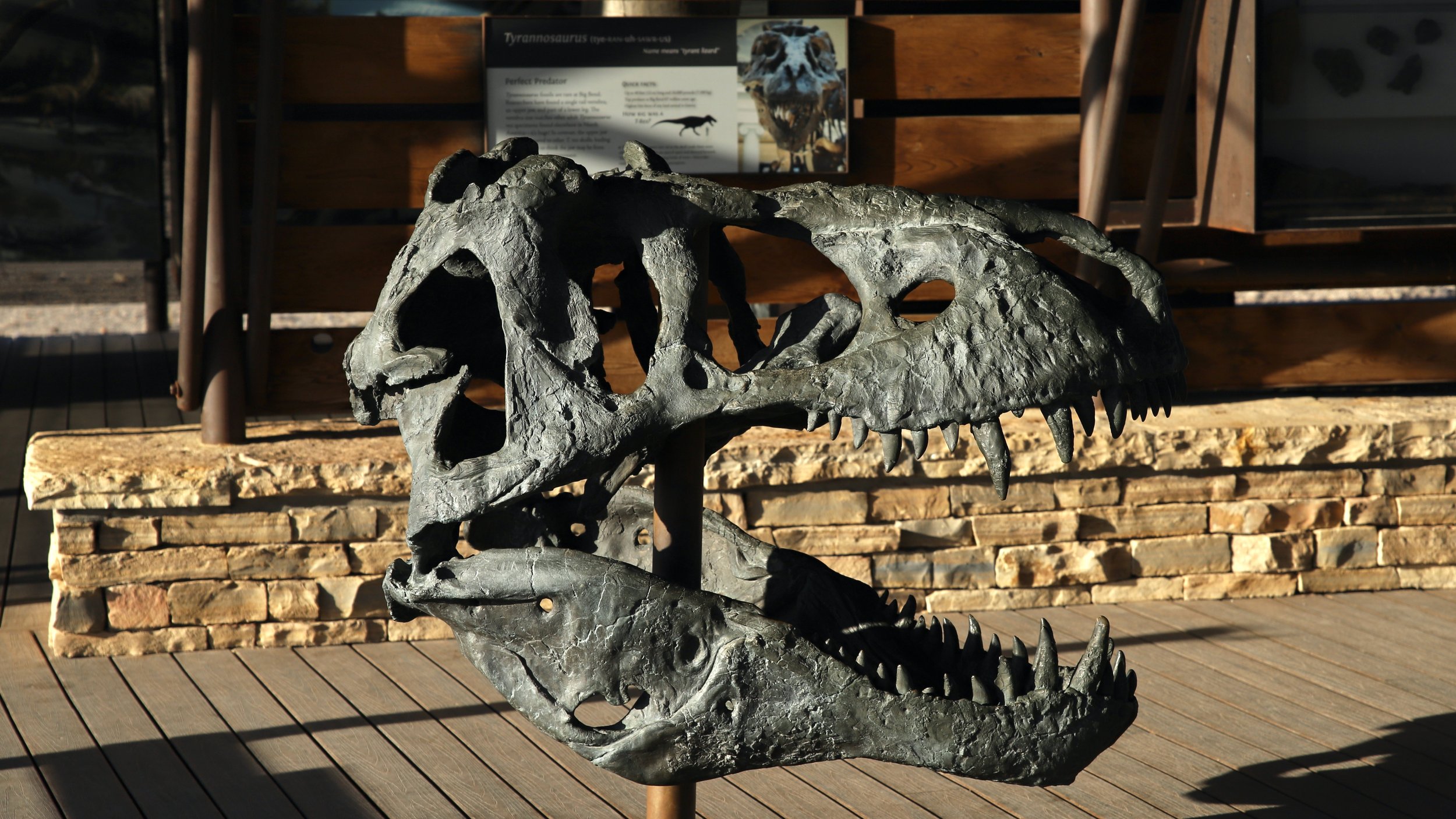
Fossil Discovery Exhibit
Much to my surprise, I found out at the Fossil Discovery Exhibit just off the Persimmon Gap to Panther Junction Section of the Main Road that Big Bend National Park houses some of the most diverse fossil records in North America which spans 130 million years. The land was once a tropical sea, a swampy coastline, a forested floodplain, and a volcanic highland. There are ancient sea creatures, massive dinosaurs, the largest flying animal that’s ever lived, early mammals, and a whole lot more. The exhibit houses some fossil recreations that showcase their massive and scary size while showing off the surrounding badlands landscape.
There’s a picnic area, the exhibit, restrooms, and a short trail with a nice desert view.
The Exhibit starts with the Marine Environment Era of the landscape which was from 130-85 million years ago. Found in this layer of ancient soil are fish, sharks, lizards, and more and surprisingly at this time, the water was probably only around 100 feet deep.
The Coastal Floodplain Environment was between 83 to 72 million years ago and it’s when the sea retreated and the area was a coastline to a massive inland sea. This was a perfect spot for dinosaurs to roam. Dinosaurs which included the massive swamp hunter known as Deinosuchus (die-no-sUE-kus) or the "terrible crocodile”. There’s a big ole recreation of him when you enter and there’s a skull recreation in the big main room of the exhibit. Its body was as long as a school bus at 39 feet long, it weighed 16,000 pounds, and several fossils of turtle shells and dinosaurs have been found within the park with Deinosuchus bite marks.
72 to 55 million years ago the Inland Floodplain Environment began in the park and the sea receded which allowed rivers to cut through the landscape and for even bigger dinosaurs to roam. Apparently the earth cooled and seasons began to develop.
And then the Volcanic Highlands Environment formed as the Rockies were pushing up which caused the earth to erupt in volcanic activity throughout the west. 65 million years ago there were no more dinos and the mammals began to reign supreme. And many of those mammals have been found within the park.







